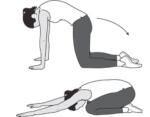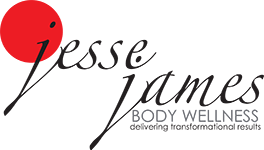
Neck and Shoulder Stress: Managing Through Stretching
The shoulders and neck carry much of our daily stresses, which can manifest into serious muscle or nerve pain in these areas. Most of us have experienced this, some more than others, and many of us have a hard time identifying the source of the pain. Maybe we are experiencing pain in our neck, but the source of pain is actually coming from our shoulder(s). How can we figure out where the source of neck and shoulder pain is coming from?
Shoulder pain can occur for a number of reasons, but most commonly shoulder pain is a result of a damaged rotator cuff (a group of tendons and muscles that stabilize the joint). The rotator cuff is easily damaged because of the tendon’s position within the supraspinatus muscle, one of the four muscles that make up the rotator cuff. This tendon runs below the bone on the outside of the shoulder, and when it becomes inflamed it gets pinched between two bones of the shoulder. As we age, the rotator cuff wears down, and we become more susceptible to tears. This generally happens to those who are 40+ years old. Signs that helps detect if the rotator cuff is injured are if pain…
• Develops in the shoulder itself or on the outside of your upper arm
• Is dull and aching
• Occurs when you reach overhead or behind your back, or when lifting
• Radiates into the upper arm, but not past the elbow
• Persists at night
• Improves when you rest your arm
The neck is another common area where we hold a lot of pain and tension, and this pain can be a result of many straining activities, whether it’s from bad posture or from participating in a physical activity. Because of the strain, many of us can develop arthritis in the neck. In fact, about 65 percent of people over the age of 65 have developed arthritis in one or more joints in their neck. There are 14 nerves and 8 joints in the neck, and when pain occurs it can be difficult to pinpoint where the pain is actually stemming from. Several ways to detect arthritis or nerve-related neck pain are if pain…
• Develops in your shoulder blade, or close to or on the side of your neck
• Is sharp, stabbing, burning or tingling
• Radiates down past your elbow or even into your hand
• Persists at rest
• Occurs when you extend your arms or twist them inward
• Is relieved when you support your neck
2 STRETCHES TO REDUCE ROTATOR CUFF & SHOULDER PAIN (from the American Academy of Orthopaedic Surgeons):
Warm-up: Before doing the following exercises, warm up with 5 to 10 minutes of low impact activity, like walking or riding a stationary bicycle.
1. Pendulum
Main muscles worked: Deltoids, supraspinatus, infraspinatus, subscapularis
Equipment needed: None
Repetitions: 2 sets of 10
Days Per Week: 5 to 6
Step-by-step directions
• Lean forward and place one hand on a counter or table for support. Let your other arm hang freely at your side.
• Gently swing your arm forward and back. Repeat the exercise moving your arm side-to-side, and repeat again in a circular motion.
• Repeat the entire sequence with the other arm.
Tip: Do not round your back or lock your knees.

2. Crossover Arm Stretch
Main muscles worked: Posterior deltoid
You should feel this stretch at the back of your shoulder
Equipment needed: None
Repetitions: 4 each side
Days Per Week: 5 to 6
Step-by-step directions
• Relax your shoulders and gently pull one arm across your chest as far as possible, holding at your upper arm.
• Hold the stretch for 30 seconds and then relax for 30 seconds.
• Repeat with the other arm.
Tip: Do not pull or put pressure on your elbow.

2 EXCERISES TO REDUCE NECK PAIN (from the American Academy of Orthopaedic Surgeons):
1. Head Rolls
Repetitions 3 sets of 3
Days per week Daily
Main muscles worked: Cervical spine muscles, trapezius
You should feel this stretch all around your neck and into your upper back
Equipment needed: None
Step-by-step directions
• Sit in a chair or stand with your weight evenly distributed on both feet.
• Gently bring your chin toward your chest.
• Roll your head to the right and turn so that your ear is over your shoulder (1). Hold for 5 seconds.
• Gently roll your head back toward your chest and to the left. Turn your head so that your ear is over your left shoulder (2). Hold for 5 seconds.
• Slowly roll your head back and in a clockwise circle three times (3).
• Reverse directions and slow roll your head in a counterclockwise circle three times (4).
Tip Do not shrug your shoulders up during this exercise.

2. Kneeling Back Extension
Repetitions 10
Days per week Daily
Main muscles worked: Quadratus lumborum, erector spinae
You should feel this stretch in your lower back and your abdominals
Equipment needed: None
Step-by-step directions
• Begin on your hands and knees with your shoulders positioned over your hands.
• Rock forward onto your arms, round your shoulders and allow your low back to drop toward the floor. Hold for 5 seconds.
• Rock backward and sit your buttocks as close to your heels as possible. Extend your arms and hold for 5 seconds.
Tip Look down on the floor to keep your neck in alignment with your spine.



